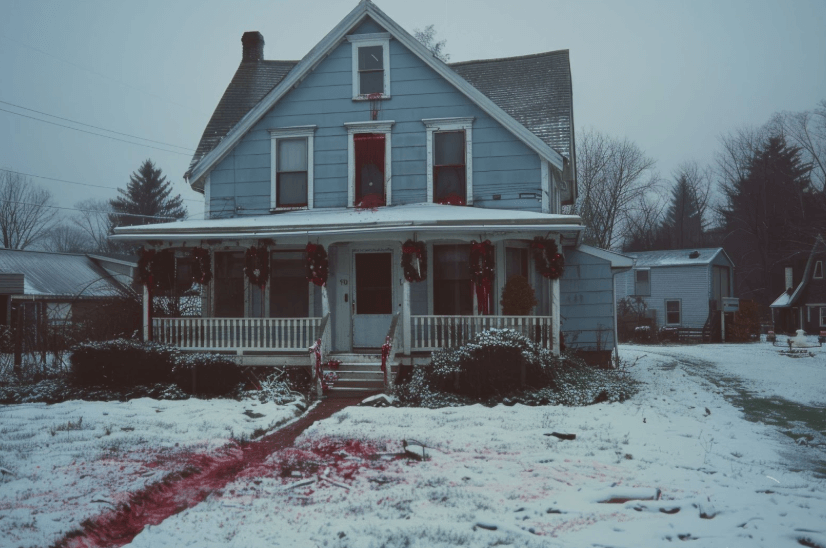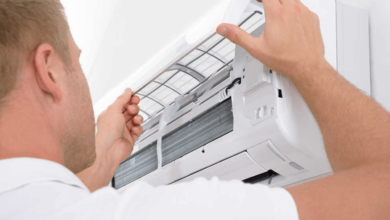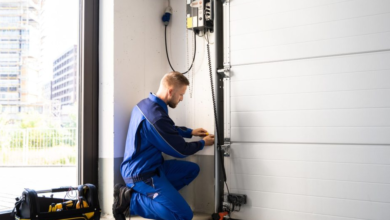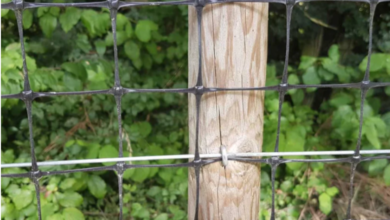
How to Tell if Roof Has Hail Damage
Severe hail storms can cause significant damage to roofs, leading to costly repairs if left unaddressed. It’s crucial for homeowners to inspect their roofs after a hail storm to identify potential damage. Prompt action can save you from future headaches and financial burdens. Understanding the basics of roof inspection and hail damage detection is essential for maintaining the integrity of your home.
Being proactive can make all the difference. By knowing what to look for, you can ensure your roof remains in good condition and avoid costly repairs down the line.
Key Takeaways
- Inspecting your roof after a hail storm is crucial for identifying potential damage.
- Prompt action can save you from costly repairs and future headaches.
- Understanding the basics of roof inspection can help you maintain your home’s integrity.
- Knowing what to look for during a roof inspection can make a significant difference.
- A proactive approach to roof maintenance can save you money in the long run.
Understanding Hail Damage: An Overview
The aftermath of a hail storm often leaves homeowners wondering about the condition of their roof. Understanding hail damage is crucial for homeowners to assess the integrity of their roofing system.
What is Hail Damage?
Hail damage refers to the destruction or deterioration caused to roofing materials by hail. The impact of hail can compromise the structural integrity of your roof, potentially leading to leaks and other issues.
Hail damage manifests in various forms depending on the roofing material. For instance, asphalt shingles may lose granules, while metal roofs can develop dents. Understanding these signs is key to spotting hail damage on your roof.
The severity of hail damage can vary widely, from minor cosmetic issues to significant structural problems. Regular inspections are vital to identify and address hail damage promptly.
Why is it Important to Assess?
Assessing hail damage is important because it allows homeowners to address potential issues before they escalate. Untreated hail damage can lead to leaks, structural damage, and a shortened lifespan of your roof.
Moreover, assessing hail damage is often necessary for insurance claims. Documenting the damage with photos and detailed notes can facilitate the claims process.
| Roofing Material | Common Hail Damage Signs | Potential Consequences |
| Asphalt Shingles | Granule loss, cracks | Leaks, reduced roof lifespan |
| Metal Roofs | Dents, punctures | Structural integrity compromised, rust |
| Tile Roofs | Cracks, broken tiles | Water intrusion, structural damage |
By understanding what constitutes hail damage and why it’s crucial to assess it, homeowners can take proactive steps to maintain their roof’s integrity. Regular inspections and prompt repairs are key to mitigating the effects of hail damage.
See also: Your Ultimate Guide to Massage Services in Miami
Common Signs of Hail Damage on Roofs
Hail damage can be subtle, but recognizing its signs is crucial for maintaining your roof’s integrity. Different roofing materials exhibit different types of damage, making it essential to know what to look for.
Dents and Dimples on Roof Materials
One of the most common signs of hail damage is the presence of dents and dimples on roof materials, particularly on metal roofs and soft metal components like gutters and downspouts. These dents can vary in size and depth, depending on the hail stone’s size and velocity.
- Check for dents on metal roofs, gutters, and downspouts.
- Look for dimples on softer materials that may not dent but can still be damaged.
Granule Loss from Asphalt Shingles
Asphalt shingles are prone to granule loss when hit by hail. These granules protect the shingle from UV damage, and losing them can lead to premature aging.
To identify granule loss:
- Check your gutters and downspouts for an accumulation of granules.
- Inspect your shingles for bare spots or areas where the granules are missing.
Cracks and Punctures on Roof Surface
Cracks and punctures are more severe signs of hail damage that can lead to leaks and further damage if not addressed promptly.
- Inspect your roof for any cracks or punctures, especially after a hail storm.
- Pay particular attention to areas around chimneys, vents, and skylights, as these are common weak points.
Inspecting Different Roof Types
Assessing hail damage on your roof begins with identifying the type of roofing material and its specific inspection needs. Different roofing materials demand unique inspection techniques to accurately assess hail damage. In this section, we’ll explore how to inspect the most common types of roofs for hail damage.
Asphalt Shingles
Asphalt shingles are one of the most common roofing materials in the United States. When inspecting asphalt shingles for hail damage, look for:
- Missing or damaged granules: Hail can dislodge the granules that protect your shingles, leading to premature aging.
- Cracks or splits: Inspect shingles for cracks or splits, which can be a sign of hail impact.
- Dents or dimples: Soft metal components like those in some shingle designs can be dented by hail.
It’s essential to check the condition of your shingles carefully, as damaged shingles can lead to leaks and further damage.
Metal Roofs
Metal roofs are known for their durability, but they’re not immune to hail damage. When checking a metal roof for hail damage:
- Inspect for dents and dings. While minor dents might not affect the roof’s functionality, they can be a cosmetic issue.
- Check for scratches or punctures. Larger hailstones can scratch or puncture metal roofs, especially if they are softer metals.
- Examine the fasteners. Hail can loosen the fasteners that secure the metal panels, leading to potential leaks.
Metal roofs can be more challenging to inspect due to their smooth surface, so using the right tools or consulting a professional might be necessary.
Tile Roofs
Tile roofs, whether made of clay, concrete, or slate, have their unique vulnerabilities to hail. When assessing hail damage on tile roofs:
- Look for cracked or broken tiles. Hail can cause tiles to crack or break, especially if they are older or already weakened.
- Inspect the underlayment. Even if the tiles appear intact, hail can still damage the underlayment, leading to leaks.
- Check for dislodged tiles. Hail can dislodge tiles, especially if they are not properly secured.
Replacing damaged tiles promptly is crucial to prevent water intrusion and further damage to your roof and home.
By understanding the specific needs and vulnerabilities of your roof type, you can more effectively check for hail damage and take the necessary steps to protect your home.
Areas of Your Roof to Check for Hail Damage
Inspecting your roof for hail damage requires a thorough examination of several key areas. Hail can impact various roofing components differently, making a comprehensive inspection crucial for identifying all potential damage.
Ridge Caps and Peak
The ridge caps and peak of your roof are particularly susceptible to hail damage. Inspect these areas for cracked, missing, or loose ridge caps, as well as signs of wear around the peak.
Valleys and Eaves
Valleys and eaves are other critical areas to inspect. Valleys, where two slopes meet, can be prone to hail damage, especially if debris accumulates. Eaves, the lower edges of your roof, should be checked for damage or detachment.
Flashing and Gutters
Flashing around chimneys, vents, and skylights, as well as gutters and downspouts, should be inspected for hail damage. Damaged flashing can lead to leaks, while clogged or damaged gutters can cause water to back up into your home.
| Area | Common Issues | Potential Consequences |
| Ridge Caps and Peak | Cracked or missing caps, wear around the peak | Water intrusion, structural damage |
| Valleys and Eaves | Damage to valley liners, eave detachment | Leaks, water damage to walls and ceilings |
| Flashing and Gutters | Damaged or loose flashing, clogged gutters | Leaks around vents and chimneys, water backup |
By focusing on these critical areas and understanding the potential issues, homeowners can conduct a more effective hail damage roof inspection and determine how to tell if roof has hail damage.
How to Conduct a Roof Inspection
Roof inspections are vital for spotting hail damage on roofs and preventing further issues. Conducting a thorough inspection requires careful planning, the right tools, and a focus on safety. In this section, we’ll guide you through the steps to inspect your roof effectively.
Safety Precautions to Consider
Before you start inspecting your roof, it’s crucial to take necessary safety precautions. Always wear appropriate footwear with good grip to prevent slipping. Use a sturdy ladder that’s tall enough to reach your roof, and consider having someone hold it for you. Additionally, be mindful of weather conditions; avoid inspecting your roof during strong winds or wet conditions.
Tools You Might Need
To conduct a thorough roof inspection, you’ll need a few essential tools. These include:
- A pair of binoculars for a closer look without climbing onto the roof
- A sturdy ladder for safe access
- Gardening gloves for protection while handling potentially sharp roofing materials
- A flashlight to inspect shaded or dark areas
- A camera or smartphone to document any damage found
When to Call a Professional
While a DIY inspection can be helpful, there are times when it’s best to call a professional. If you’re unsure about the extent of the damage, or if you’re not comfortable with heights, it’s wise to seek help. Professionals have the training and equipment to inspect your roof thoroughly and safely. They can also provide guidance on repairs and help with insurance claims.
| Inspection Aspect | Key Considerations |
| Safety Precautions | Appropriate footwear, sturdy ladder, weather conditions |
| Tools Needed | Binoculars, ladder, gardening gloves, flashlight, camera/smartphone |
| Professional Help | Uncertainty about damage, discomfort with heights |
Understanding Your Insurance Policy
Hail damage to your roof can be stressful, but being informed about your insurance policy can ease the process. Understanding what is covered and how to navigate the claims process can significantly reduce the financial burden of repairs.
Coverage for Hail Damage
Most homeowner insurance policies cover damage caused by hail. However, the extent of the coverage can vary. It’s essential to review your policy to understand what is included and what is not. Check if your policy covers the cost of repairs or replacement of your roof, including any additional features like skylights or chimneys.
Typically, insurance policies cover hail damage under the category of “acts of nature” or “weather-related damage.” However, the specifics can depend on the policy. For instance, some policies might require that the damage be beyond a certain deductible before the insurance kicks in.
Filing a Claim: Steps to Follow
Filing a claim for hail damage involves several steps. First, document the damage thoroughly with photos and videos. This documentation will be crucial for your insurance company to assess the damage.
- Notify Your Insurance Company: Reach out to your insurance provider as soon as possible to report the damage. They will guide you through the initial steps of the claims process.
- Get a Professional Assessment: Many insurance companies require a professional assessment of the damage. This could be done by a contractor or a roofing specialist who can provide a detailed report.
- Submit Your Claim: With your documentation and professional assessment in hand, submit your claim. Ensure you include all required information and follow the insurance company’s guidelines.
- Follow Up: After submitting your claim, follow up with your insurance company to ensure that your claim is being processed. Be prepared to provide additional information if needed.
By understanding your insurance policy and following these steps, you can navigate the process of dealing with hail damage more effectively.
Seasonal Considerations for Roof Inspection
The timing of your roof inspection can significantly impact your ability to detect hail damage. Certain seasons and weather conditions are more conducive to hail, making it essential to inspect your roof at the right time.
Best Time to Inspect for Hail Damage
In regions prone to hail, such as the Midwest, inspecting your roof after severe weather events is crucial. Spring and summer are peak seasons for hail storms, so it’s advisable to check your roof during these times. Regular inspections can help identify damage early, reducing the risk of costly repairs.
When inspecting, look for signs of hail impact, such as dents, dimples, or granule loss on your roof. Early detection is key to preventing further damage.
Post-Storm Inspection Tips
After a hail storm, inspect your roof as soon as it’s safe to do so. Start by checking for obvious signs of damage from the ground, such as missing granules in your gutters or debris on the ground. Then, conduct a closer inspection of your roof, looking for cracks, punctures, or other forms of damage.
- Check the ridge caps and peak for damage or displacement.
- Inspect valleys and eaves, as these areas are prone to accumulation of debris and damage.
- Examine flashing and gutters for signs of hail impact or clogging.
Documenting the damage with photos can be helpful when filing an insurance claim. If you’re unsure about the extent of the damage or how to proceed, consider consulting a professional roofer.
Preventative Measures for Roof Damage
Adopting preventative measures can significantly reduce the risk of hail damage to your roof. By understanding the importance of maintenance and using the right materials, homeowners can protect their roofs effectively. Regular inspections and timely repairs are crucial in preventing minor issues from becoming major problems.
Regular Maintenance Practices
Regular maintenance is key to preventing hail damage. This includes inspecting your roof regularly for damaged, missing, or loose shingles, and ensuring that all roof penetrations are sealed properly. Homeowners should also clean their gutters and downspouts regularly to prevent water buildup.
Installing Impact-Resistant Roofing Materials
Using impact-resistant roofing materials is another effective way to prevent hail damage. Materials such as metal roofs, asphalt shingles with impact-resistant ratings, and clay or concrete tiles can withstand hail impacts better than standard materials. When choosing roofing materials, consider their impact resistance class (IRC) rating.
To further enhance roof durability, consider the following practices:
- Regularly inspect your roof for signs of wear and tear.
- Trim tree branches to prevent damage from falling limbs.
- Ensure that flashing is properly sealed around chimneys, vents, and skylights.
Using impact-resistant materials can significantly reduce the risk of hail damage. Here’s a comparison of different roofing materials and their resistance to hail damage:
| Roofing Material | Hail Damage Resistance | Cost |
| Asphalt Shingles | Moderate | $3-$5 per sq. ft. |
| Metal Roofs | High | $7-$12 per sq. ft. |
| Clay/Concrete Tiles | High | $10-$15 per sq. ft. |
By implementing these preventative measures, homeowners can significantly reduce the risk of hail damage to their roofs. Regular maintenance and the use of impact-resistant materials are crucial steps in protecting your home.
The Role of Professional Roofers
Understanding the extent of hail damage on your roof requires a keen eye, often best provided by a professional roofer. While DIY inspections are valuable, there are times when hiring a professional is the best course of action. Professional roofers bring expertise and experience to the table, helping you identify and address hail damage effectively.
When to Hire a Roofing Contractor
If you’ve experienced a hail storm, it’s wise to consider hiring a roofing contractor to inspect your roof for damage. Signs of hail damage on your roof can be subtle, and a professional can identify issues that might not be immediately apparent. Look for contractors who are licensed, insured, and have experience with hail damage claims.
It’s also crucial to hire a professional if you’re unsure about how to inspect your roof safely or if you’re not confident in your ability to identify damage. Roofing contractors have the necessary equipment and training to conduct a thorough inspection, ensuring that no damage is overlooked.
Questions to Ask Your Roofer
When hiring a roofing contractor, it’s essential to ask the right questions to ensure you’re getting the best service. Start by asking about their experience with spotting hail damage on roofs and their process for inspecting and repairing damage.
- What experience do you have with hail damage repairs?
- Can you provide references or examples of previous work?
- How will you document the damage for insurance purposes?
- What is your estimate for the repairs, and what’s included?
By asking these questions, you can ensure that you’re hiring a qualified professional who will effectively address the hail damage on your roof. Remember, the goal is to restore the integrity of your roof and ensure it continues to protect your home.
A well-maintained roof is your home’s first line of defense against the elements, and with the help of a professional roofer, you can rest assured that your roof is in good hands.
DIY Repairs vs. Professional Repairs
The aftermath of a hail storm raises a critical question: should you fix hail damage on your roof yourself or call in a professional? This decision hinges on several factors, including the extent of the damage, your DIY skills, and the potential risks involved.
Pros and Cons of DIY Repairs
DIY repairs can save money on labor costs, and for minor damage, this might be a viable option. However, hail damage can often be more extensive than it initially appears, and without the proper training and equipment, homeowners might miss critical areas of damage.
Some of the key considerations for DIY repairs include:
- The extent of the damage
- Your level of comfort with heights and DIY projects
- The potential for further damage if repairs are not done correctly
Assessing the Severity of Damage
A thorough inspection is key to recognizing hail damage on your roof. Look for damage on different parts of your roof, such as the ridge caps, valleys, and eaves, as these areas are particularly susceptible to hail damage.
In conclusion, while DIY repairs can be a tempting option for fixing hail damage, it’s crucial to carefully consider your capabilities and the extent of the damage. For more significant damage or if you’re unsure, hiring a professional is often the safest and most effective choice.
Know When to Replace Your Roof
After assessing hail damage on your roof, you might wonder if a repair is enough or if it’s time for a replacement. Checking for hail damage on roof structures is crucial, as it can lead to significant issues if left unaddressed.
Signs Repair Isn’t Enough
If the damage is extensive, covering a large area or compromising the roof’s integrity, replacement is likely the best option. Look for signs like widespread granule loss on asphalt shingles, significant dents on metal roofs, or cracked tiles.
Long-Term Effects of Hail Damage
Assessing hail damage on roof longevity is vital. Ignoring or underestimating hail damage can lead to leaks, structural issues, and increased energy bills due to compromised insulation. Replacing your roof when necessary can prevent these long-term effects and ensure your home remains safe and secure.
FAQ
How do I know if my roof has hail damage?
Look for signs such as dents, dimples, granule loss, and cracks or punctures on your roof. Different roofing materials exhibit different types of damage, so it’s essential to inspect your roof carefully after a hail storm.
What are the common signs of hail damage on roofs?
Common signs include dents and dimples on roof materials, granule loss from asphalt shingles, and cracks and punctures on the roof surface. Inspecting these areas can help you identify potential hail damage.
How do I inspect my roof for hail damage?
Start by checking the ridge caps, peak, valleys, eaves, flashing, and gutters for signs of damage. Use the right tools, such as binoculars and a ladder, and consider safety precautions to avoid accidents.
What should I do if I find hail damage on my roof?
Document the damage with photos and contact your insurance provider to file a claim. It’s also recommended to hire a professional roofer to assess the damage and provide a repair or replacement estimate.
Can I repair hail damage myself?
While DIY repairs are possible, it’s crucial to assess the severity of the damage first. If the damage is extensive or you’re unsure about how to proceed, it’s best to hire a professional roofer to ensure the repairs are done correctly.
How can I prevent hail damage to my roof?
Regular maintenance practices, such as cleaning gutters and inspecting your roof after storms, can help prevent hail damage. Installing impact-resistant roofing materials can also reduce the risk of damage.
When should I replace my roof after hail damage?
If the damage is severe, or if your roof is old or has existing issues, it may be more cost-effective to replace it. Look for signs such as extensive granule loss, multiple leaks, or significant structural damage.
How do I choose the right roofer for hail damage repairs?
Research local roofers, check their credentials, and ask for references. Ensure they have experience with hail damage repairs and can provide a detailed estimate for the work needed.
What does my insurance policy cover regarding hail damage?
Review your policy to understand what is covered and what is not. Typically, homeowners’ insurance covers hail damage, but the extent of the coverage varies depending on the policy and provider.
How often should I inspect my roof for hail damage?
It’s recommended to inspect your roof after every hail storm and at least twice a year, in the spring and fall, to catch any potential issues early.




